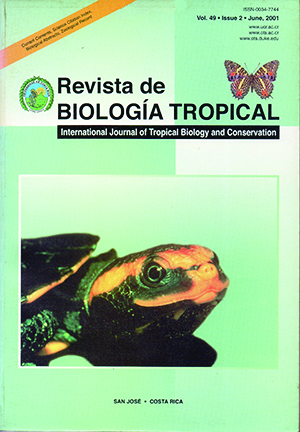Abstract
To assess the occurrence, spatial distribution and species composition of small infauna on a mangrove shore, core samples were taken along a transect in Missionary Bay at Hinchinbrook Island, north-east Australia. Three sites were arranged within the mangrove forest and one site was located in an adjacent mudflat. The sites were surveyed four times between November 1988 and October 1989. Based on the records from all samples and sites, 39 taxa were identified. Diversity (H’) ranged from 1.18 to 2.38. Overall, total abundances of small infauna (retained on a 0.25 mm sieve) reached a mean value of 5 477 ind. m-2, with little variation throughout the transect or over time. Species numbers and diversity were higher in the mudflat than at the mangrove sites. The taxonomic composition changed between the mangrove forest and the mudflat: Oligochaeta were more abundant in mangrove sediments, whereas Polychaeta dominated in the mudflat. Of the polychaetes, Capitellidae were almost restricted to the mangrove sites, Sabellidae were recorded frequently at all sites, and Sigambra parva and Myriochele sp. were confined to the mudflat and the mangrove fringe. These species accounted also for dissimilarities between sites. Multivariate analyses showed a distinct assemblage at the mudflat compared to the mangrove sites. This survey showed that small infauna is an abundant component of mangrove sediments, which has been previously underestimated.##plugins.facebook.comentarios##

This work is licensed under a Creative Commons Attribution 4.0 International License.
Copyright (c) 2001 Revista de Biología Tropical


